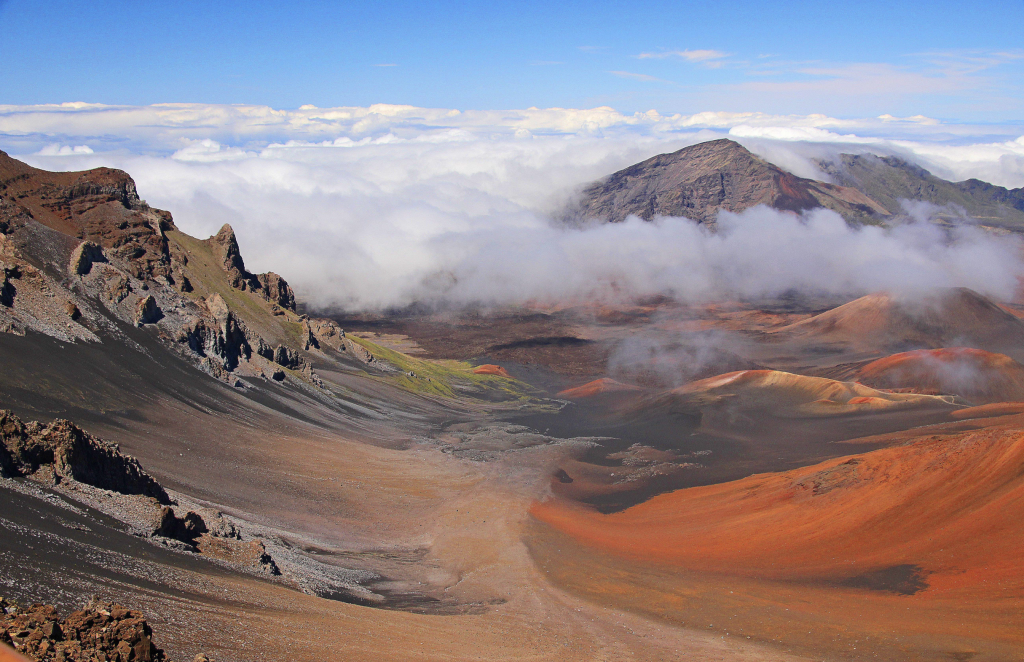New Species of “Water Bear” Found at Haleakalā, Maui, Named After Samuel ‘Ohu Gon
May 11, 2021, 11:33 AM HST
* Updated May 12, 2:08 PM Listen to this Article
3 minutes AAA

A new species of Tardigrada, a phylum of eight-legged segmented micro-animals also known as water bears, has been named after Dr. Samuel M. ‘Ohukani‘ōhi‘a Gon III, Senior Scientist and Cultural Advisor for The Nature Conservancy (TNC) Hawai‘i and Palmyra Chapter.
Claxtonia goni is described from specimens Gon collected years ago in the central “crater district” of Haleakalā National Park on the island of Maui in the Hawaiian Islands. The new species, quite distinct from other species of Claxtonia from other places in the world, lives in seasonally dry native moss on sparsely vegetated lava, and was present at several locations scattered across the park’s high elevation regions.
In the scientific paper describing the species, authors Peter Degma, Harry A. Meyer and Juliana G. Hinto state, “The specific name goni is a genitive noun given in honour of Samuel M. ʻOhukaniʻōhiʻa Gon III, Senior Scientist and Cultural Advisor at the Nature Conservancy of Hawaiʻi, in recognition of his contributions to the study of Hawaiian tardigrades.”

There are more than 1,300 known species in the phylum Tardigrada found in both terrestrial and freshwater habitats, with over 30 found in the Hawaiian Islands.
“Tardigrades are famous as one of the most resistant life forms in existence,” says Gon. “They can enter suspended animation in cyst form when their environment dries—and in that form survive incredible conditions such as hard vacuum, radiation, and extremes of temperature—then ‘come back to life’ when placed in water.”
“Claxtonia goni,” adds Gon, “is a stout creature, resembling an armored blimp with eight stubby legs bearing sharp curved claws. It would be frightening, except that it is only two tenths of a millimeter long.”
Haleakalā is the world’s single richest place for water bears—thirty-six species were collected in just three days in a portion of Haleakalā National Park in 1985 by Gon and his university colleagues. By comparison, it took decades for scientists to find and describe the same number of tardigrades from the entire State of California.
Haleakalā is not the only place in the Hawaiian islands with high elevation lava habitats; huge areas of the Island of Hawaiʻi are also potentially excellent water bear habitat, so when Hawai‘i Volcanoes National Park celebrated its 100 year anniversary in 2015 with a “bioblitz” (a brief citizen science exploration of the biological riches of the park), Gon led a mini-expedition in the park in search of water bears – and was successful, showing them to the public under a microscope.

“The bioblitz find opened the doors to explore the water bear fauna of Hawaiʻi Island,” says Gon, “and if our other native species are any example, it stands to reason that species of water bear unique to each island will be found.”
Tardigrades represent the unseen and overlooked native invertebrate life forms that are found in Hawaiian ecosystems. The conservation efforts of TNC and its partners protect the habitat of these and thousands of other native creatures, all of which have roles to play in the ecosystem.
“I am surprised and delighted to have this tiny native Hawaiian creature named in my honor, and for the opportunity to support the work of these scientists,” says Gon. “I am continually amazed at how much Hawai‘i has to offer in terms of biodiversity and undiscovered forms of life. We truly are a showcase of generative island evolution.”
Article from Maui Now: https://mauinow.com/2021/05/11/new-species-of-water-bear-found-at-haleakala-maui-named-after-samuel-ohu-gon/